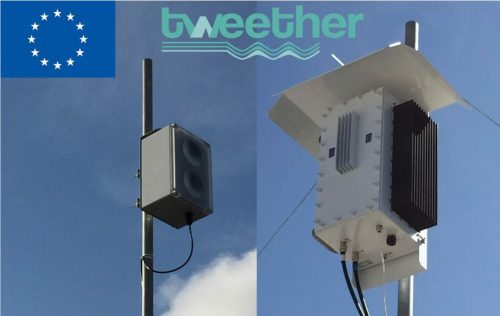Researchers report successful tests which bring us closer to a 5G future in the world of wireless Internet. A future vision of high-speed wireless technology that promises to overcome two major 5G challenges has taken a giant leap forward. Researchers say they have just carried out successful milestone tests of a cutting-edge European wave wireless technology.
According to Lancaster University in England:
“A European consortium of engineers and scientists have demonstrated the World’s first real-world environment transmission of data in point to multipoint within part of the wireless frequency spectrum known as millimeter wave, or W-band, which is between 92-95 GHz.”
A consortium is an alliance of people, companies, organizations, and even governments that get together to achieve a common objective.
Scientists and engineers have carried out a field test at the Universitat Politecnica De Valencia, Spain. This comes after over three years of work designing state-of-the-art components and systems. The systems and components have enabled the first point to multipoint 90+ GHz wireless system.
5G future – TWEETHER project
Professor Claudio Paoloni is Head of Lancaster’s Department of Engineering. He leads the European Commission Horizon 2020 TWEETHER project.
TWEETHER will enable the transmission of up to 10 Gigabit per second over a large area to feed base stations for wireless fixed broadband or mobile networks.
The system provides higher flexibility than fiber. It also provides lower cost and enables delivery to areas where deploying fiber is too expensive. Deploying fiber in many rural areas, for example, is too costly.

Prof. Paoloni’s comment
Prof. Paoloni said:
“It has been an emotional moment to see the TWEETHER equipment installed on the masts of the Universitat Politecnica de Valencia and watch the monitor showing the first data transmitted. TWEETHER has been a visionary project for a break-through in the wireless communication networks.”
“The development of European technology at millimeter wave aims to solve two major challenges of modern communications – a way of wirelessly transmit to and from a grid of new 5G small cells networks, and the digital divide that affects millions of houses without broadband in areas where the fiber cannot be deployed.”
“I am in debt with all the scientists of the TWEETHER consortium that with their outstanding expertise and commitment have realized the TWEETHER concept. I am also grateful to the European Commission for giving us this great opportunity by funding the TWEETHER project through the Horizon 2020 program.”
5G future – millimeter waves
We do not currently use several parts of the frequency spectrum. Millimeter waves, for example, are part of the spectrum we do not currently use. Because of the wide frequency bands available, researchers believe millimeter waves could support high data rates.
We will only be able to meet the challenges posed by wireless communication data speeds and volumes by exploiting millimeter waves. TWEETHER is trying to overcome these technical hurdles.
This new TWEETHER millimeter wave technology will become available to mobile network providers. It will form part of future 5G networks.
Lancaster University coordinates the TWEETHER Consortium. Other members include Universitat Politecnica de Valencia (Spain), Thales MIS, OMMIC, Telecom ParisTech, Bowen, When-AB (France), Fibernova Systems, Goethe University in Frankfurt and HF Systems Engineering (Germany).

